Gunu Jho
Investigating Disentanglement in a Phoneme-level Speech Codec for Prosody Modeling
Sep 13, 2024



Abstract:Most of the prevalent approaches in speech prosody modeling rely on learning global style representations in a continuous latent space which encode and transfer the attributes of reference speech. However, recent work on neural codecs which are based on Residual Vector Quantization (RVQ) already shows great potential offering distinct advantages. We investigate the prosody modeling capabilities of the discrete space of such an RVQ-VAE model, modifying it to operate on the phoneme-level. We condition both the encoder and decoder of the model on linguistic representations and apply a global speaker embedding in order to factor out both phonetic and speaker information. We conduct an extensive set of investigations based on subjective experiments and objective measures to show that the phoneme-level discrete latent representations obtained this way achieves a high degree of disentanglement, capturing fine-grained prosodic information that is robust and transferable. The latent space turns out to have interpretable structure with its principal components corresponding to pitch and energy.
Improved Text Emotion Prediction Using Combined Valence and Arousal Ordinal Classification
Apr 02, 2024
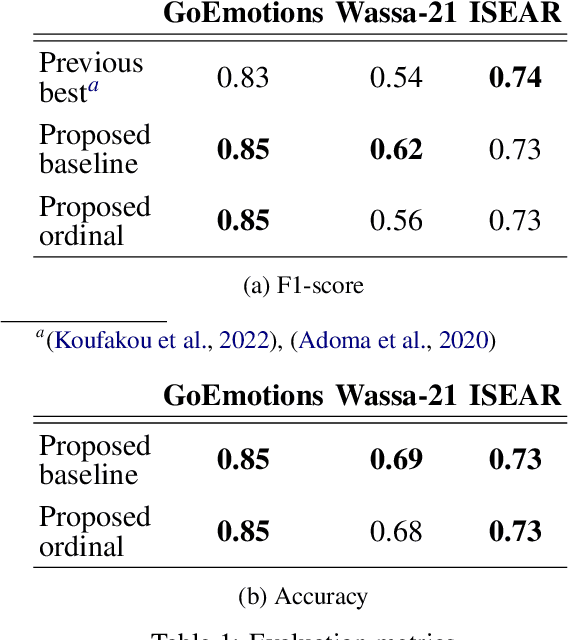
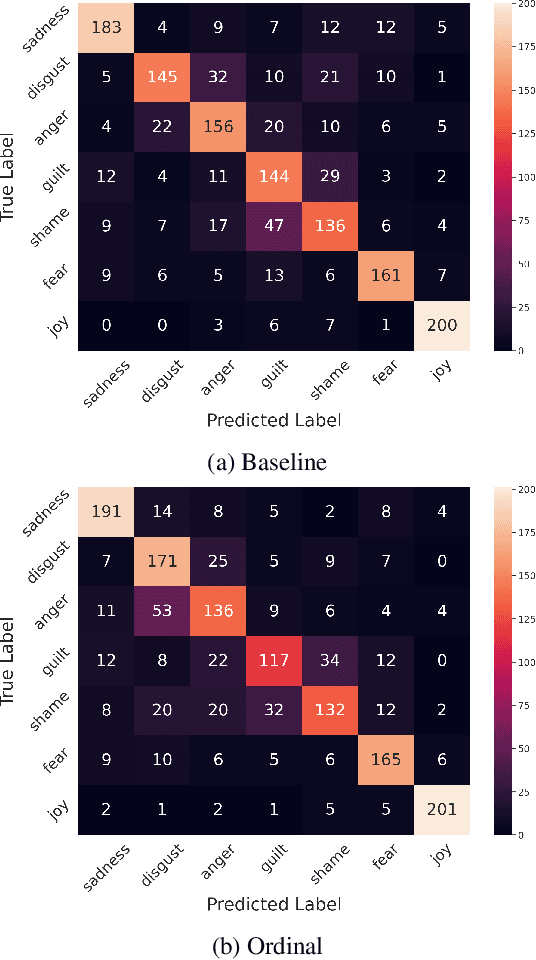
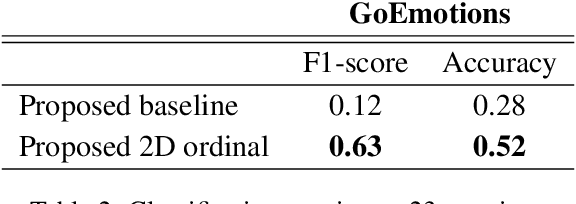
Abstract:Emotion detection in textual data has received growing interest in recent years, as it is pivotal for developing empathetic human-computer interaction systems. This paper introduces a method for categorizing emotions from text, which acknowledges and differentiates between the diversified similarities and distinctions of various emotions. Initially, we establish a baseline by training a transformer-based model for standard emotion classification, achieving state-of-the-art performance. We argue that not all misclassifications are of the same importance, as there are perceptual similarities among emotional classes. We thus redefine the emotion labeling problem by shifting it from a traditional classification model to an ordinal classification one, where discrete emotions are arranged in a sequential order according to their valence levels. Finally, we propose a method that performs ordinal classification in the two-dimensional emotion space, considering both valence and arousal scales. The results show that our approach not only preserves high accuracy in emotion prediction but also significantly reduces the magnitude of errors in cases of misclassification.
Low-Resource Cross-Domain Singing Voice Synthesis via Reduced Self-Supervised Speech Representations
Feb 02, 2024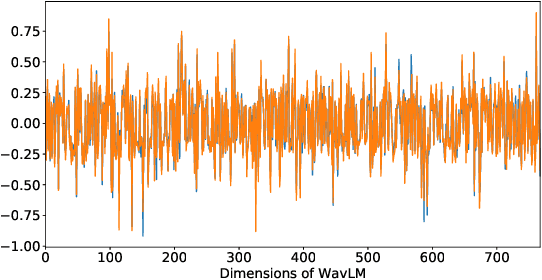

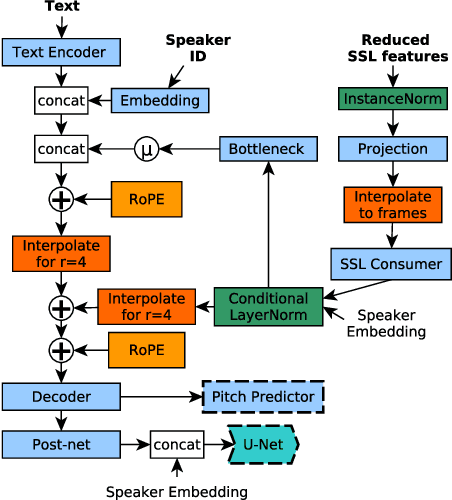
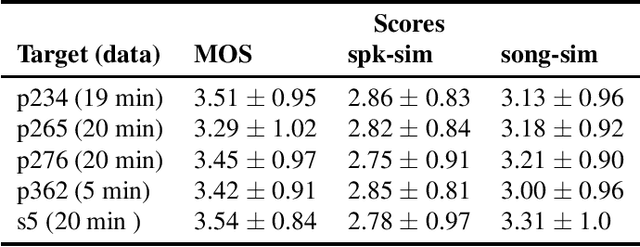
Abstract:In this paper, we propose a singing voice synthesis model, Karaoker-SSL, that is trained only on text and speech data as a typical multi-speaker acoustic model. It is a low-resource pipeline that does not utilize any singing data end-to-end, since its vocoder is also trained on speech data. Karaoker-SSL is conditioned by self-supervised speech representations in an unsupervised manner. We preprocess these representations by selecting only a subset of their task-correlated dimensions. The conditioning module is indirectly guided to capture style information during training by multi-tasking. This is achieved with a Conformer-based module, which predicts the pitch from the acoustic model's output. Thus, Karaoker-SSL allows singing voice synthesis without reliance on hand-crafted and domain-specific features. There are also no requirements for text alignments or lyrics timestamps. To refine the voice quality, we employ a U-Net discriminator that is conditioned on the target speaker and follows a Diffusion GAN training scheme.
Fine-grained Noise Control for Multispeaker Speech Synthesis
Apr 11, 2022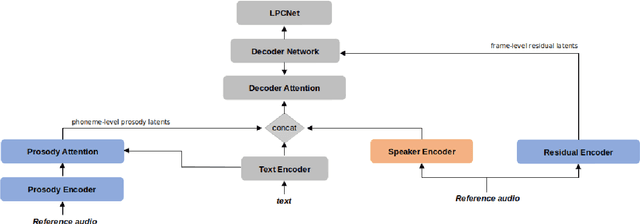
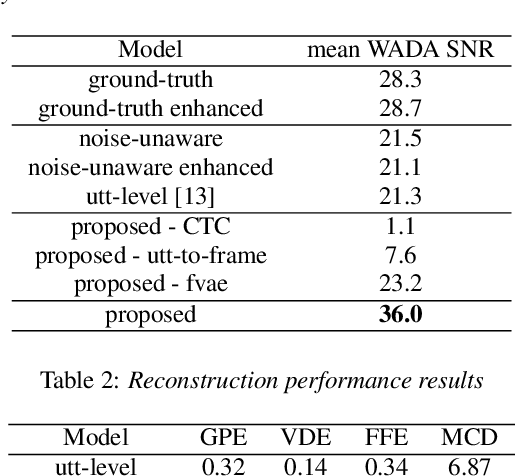
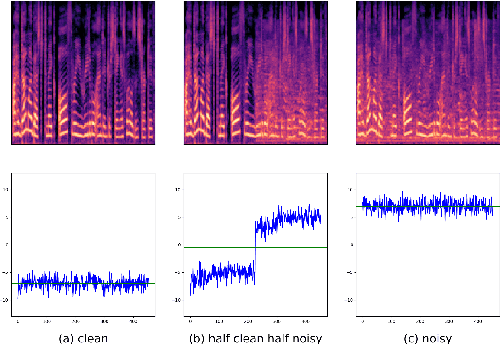
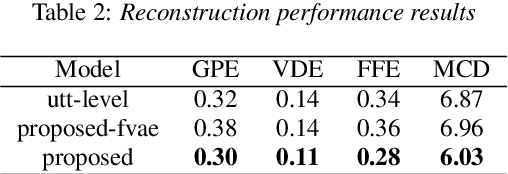
Abstract:A text-to-speech (TTS) model typically factorizes speech attributes such as content, speaker and prosody into disentangled representations.Recent works aim to additionally model the acoustic conditions explicitly, in order to disentangle the primary speech factors, i.e. linguistic content, prosody and timbre from any residual factors, such as recording conditions and background noise.This paper proposes unsupervised, interpretable and fine-grained noise and prosody modeling. We incorporate adversarial training, representation bottleneck and utterance-to-frame modeling in order to learn frame-level noise representations. To the same end, we perform fine-grained prosody modeling via a Fully Hierarchical Variational AutoEncoder (FVAE) which additionally results in more expressive speech synthesis.
Karaoker: Alignment-free singing voice synthesis with speech training data
Apr 08, 2022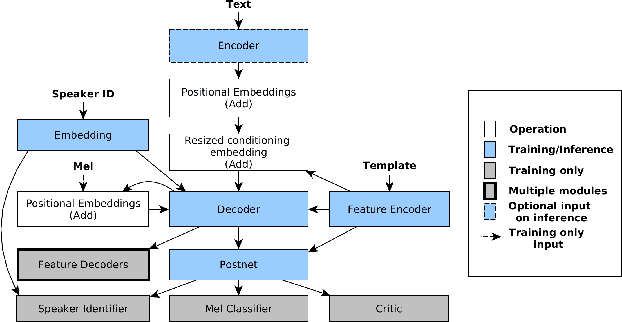

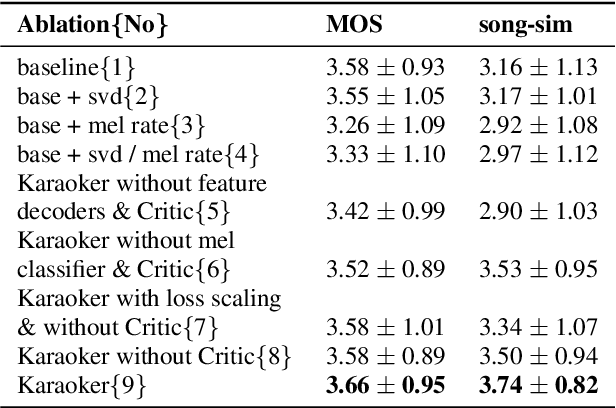
Abstract:Existing singing voice synthesis models (SVS) are usually trained on singing data and depend on either error-prone time-alignment and duration features or explicit music score information. In this paper, we propose Karaoker, a multispeaker Tacotron-based model conditioned on voice characteristic features that is trained exclusively on spoken data without requiring time-alignments. Karaoker synthesizes singing voice following a multi-dimensional template extracted from a source waveform of an unseen speaker/singer. The model is jointly conditioned with a single deep convolutional encoder on continuous data including pitch, intensity, harmonicity, formants, cepstral peak prominence and octaves. We extend the text-to-speech training objective with feature reconstruction, classification and speaker identification tasks that guide the model to an accurate result. Except for multi-tasking, we also employ a Wasserstein GAN training scheme as well as new losses on the acoustic model's output to further refine the quality of the model.
Self supervised learning for robust voice cloning
Apr 07, 2022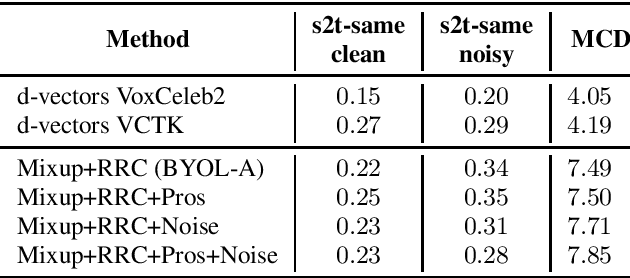
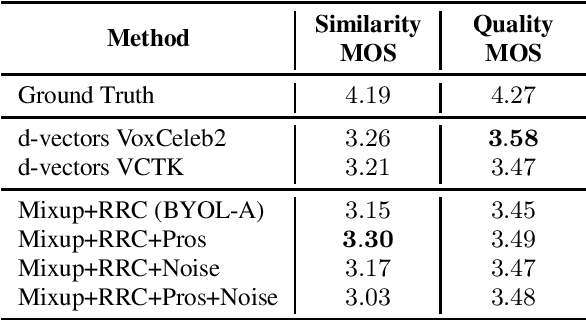
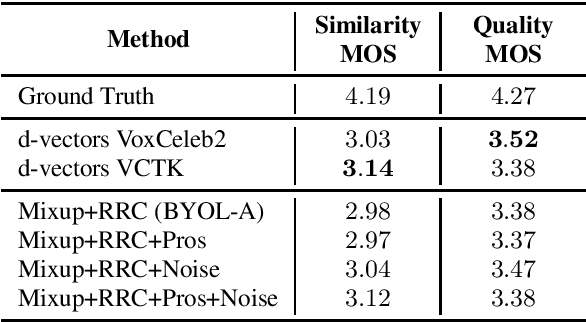
Abstract:Voice cloning is a difficult task which requires robust and informative features incorporated in a high quality TTS system in order to effectively copy an unseen speaker's voice. In our work, we utilize features learned in a self-supervised framework via the Bootstrap Your Own Latent (BYOL) method, which is shown to produce high quality speech representations when specific audio augmentations are applied to the vanilla algorithm. We further extend the augmentations in the training procedure to aid the resulting features to capture the speaker identity and to make them robust to noise and acoustic conditions. The learned features are used as pre-trained utterance-level embeddings and as inputs to a Non-Attentive Tacotron based architecture, aiming to achieve multispeaker speech synthesis without utilizing additional speaker features. This method enables us to train our model in an unlabeled multispeaker dataset as well as use unseen speaker embeddings to copy a speaker's voice. Subjective and objective evaluations are used to validate the proposed model, as well as the robustness to the acoustic conditions of the target utterance.
SOMOS: The Samsung Open MOS Dataset for the Evaluation of Neural Text-to-Speech Synthesis
Apr 06, 2022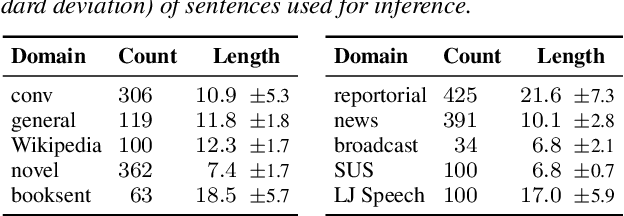
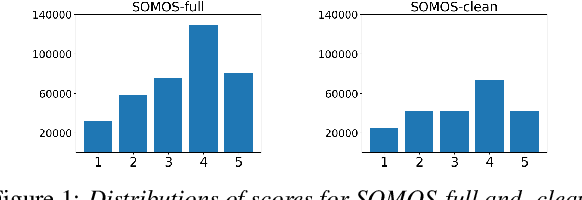
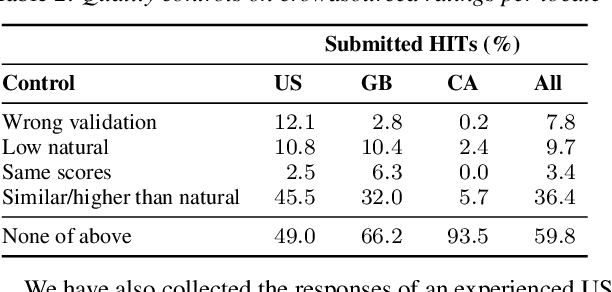

Abstract:In this work, we present the SOMOS dataset, the first large-scale mean opinion scores (MOS) dataset consisting of solely neural text-to-speech (TTS) samples. It can be employed to train automatic MOS prediction systems focused on the assessment of modern synthesizers, and can stimulate advancements in acoustic model evaluation. It consists of 20K synthetic utterances of the LJ Speech voice, a public domain speech dataset which is a common benchmark for building neural acoustic models and vocoders. Utterances are generated from 200 TTS systems including vanilla neural acoustic models as well as models which allow prosodic variations. An LPCNet vocoder is used for all systems, so that the samples' variation depends only on the acoustic models. The synthesized utterances provide balanced and adequate domain and length coverage. We collect MOS naturalness evaluations on 3 English Amazon Mechanical Turk locales and share practices leading to reliable crowdsourced annotations for this task. Baseline results of state-of-the-art MOS prediction models on the SOMOS dataset are presented, while we show the challenges that such models face when assigned to evaluate synthetic utterances.
 Add to Chrome
Add to Chrome Add to Firefox
Add to Firefox Add to Edge
Add to Edge